It's a cold, starlit 2 a.m. and Ian MacNairn is sprinting down from one of the highest peaks in Andorra, nestled between France and Spain.
The mountaintop's rocky ridgeline has opened into a wide slope covered in tufts of grass. Everything is slick with dew, but MacNairn, 25 kilometres into what may be the world's most extreme trail-running race, is barrelling down as quickly as his legs can go. He slips. MacNairn puts his hand out to break his fall. Feels a searing pain in his thumb. He picks himself up but doesn't remove his glove to assess the damage.
He knows it's messed up.
X-rays weeks later will reveal an avulsion fracture, in which a ligament tears off the bone and takes a small piece of bone in the process.
In a state of shock, one of Canada's top ultra-runners pushes on in the Els 2900 race. His thumb hurts. Every part of him hurts. But MacNairn, an anthropologist who has spent years conducting the world's largest study of ultra-runners, knows this is the nature of his sport — pain is part of the process.
Watch "Run The Risk," a mini-documentary on Ian MacNairn's never-ending race:
His previous attempt at the Els 2900, a 70-kilometre adventure race that rambles up and down seven mountain peaks, ended short of the finish when MacNairn fell on an icy patch and slid down a mountain face. His diabetic equipment tore away from the waistband of his tights and skittered further down the mountain. He hurried to collect the parts, but what he found was unusable. With that, he was done. He ran to the next aid station and called it a day.
This time, he is committed to crossing the finish line, broken thumb and all. So he keeps going, using his throbbing hand to climb the iron rungs set along a 350-metre stretch up the mountain.
But MacNairn is not suffering.
No, suffering is what he'll experience a year from now when he's home, lying in bed, content after a dinner out with friends.
A willingness to suffer is how many high-performance athletes accomplish what they do.
He'll test his blood sugar and find it unusually low. He'll drink lemonade. His blood sugar will keep dropping and he will keep drinking until he's too full to drink any more.
His girlfriend at the time, Michelle Landry, an accomplished adventure athlete in her own right, will notice he is slurring his words. She'll tell him he needs sugar, to drink some juice. He'll refuse. He's confused and scared, his words bursting out in shouted spurts. She'll insist that he needs a shot of glucagon to boost his blood sugar. MacNairn will respond combatively and refuse to let her near him.
Landry will call EMS. The police will arrive first, sent perhaps because the dispatcher has heard the shouting in the background. They'll never be sure why the police come. When EMS show up, paramedics will give MacNairn a dose of intravenous dextrose, a sugar. He'll vomit repeatedly.
A few days later, he'll develop an infection in his arm from where the dextrose entered his body, requiring a hospital visit. He will recover but he will suffer greatly.
These kinds of events leave a deeper scar than a broken thumb.
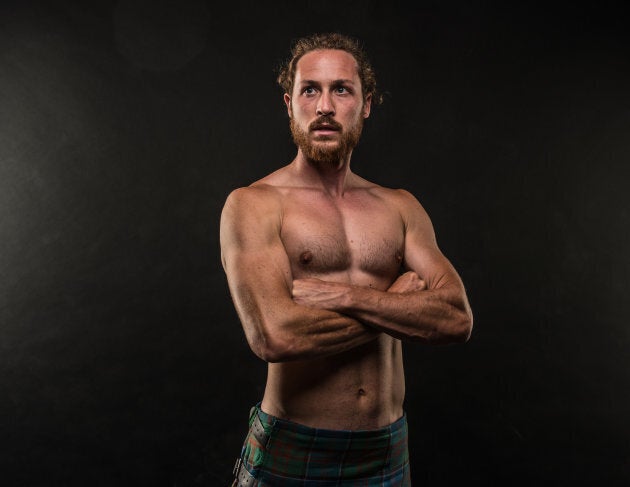
People often talk of suffering with pride in endurance sport. They use it as a measure of their commitment to sport, their ability to experience pain yet push on. A willingness to suffer is how many high-performance athletes accomplish what they do.
But suffering is not how MacNairn, 31, sees it.
"If I almost died from doing nothing all day — just from lying in bed— it changes my reference point for what suffering is or could be," he explains, several weeks later over coffees in a Calgary cafe.
He rubs his chin when he contemplates what to say next. Wearing a jacket from The North Face and running shoes, he looks every part the professional runner but describes his athletic experiences with the unemotional demeanour of a researcher. He mixes the language of both adrenalin junkie and academic into his stories, using phrases like "such an epic day" and "operationalize the value-space of one's body" in the same conversation.
"Choosing to suffer in the mountains is trivial in a sense," he says. "Not to say that it's not difficult; some of this stuff is horrifically hard and painful and rough. I've had really rough days out in the mountains. I know lots of people who haven't come home from the mountains, who've died out there. But at the end of the day, if you can choose it, I don't know that that's real suffering."
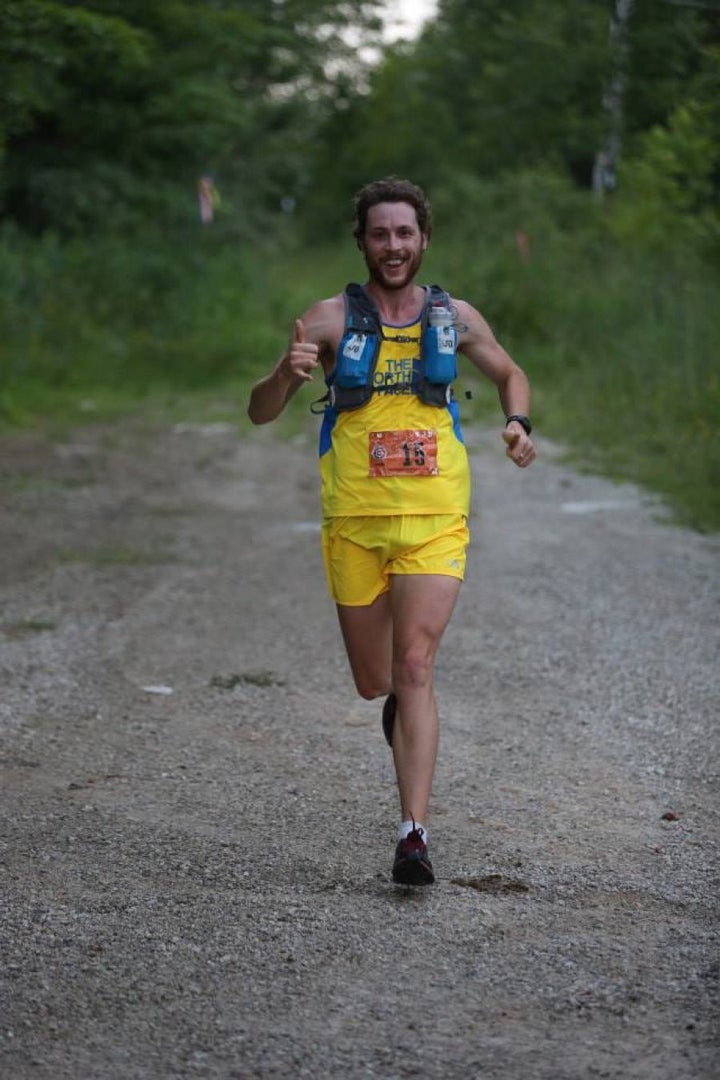
MacNairn became one of the world's top ultra-runners and top researchers on the ultra-running phenomenon quite literally by accident.
Born in Red Deer, Alta., in 1987, he grew up uncommonly gifted in both academics and athletics. By the spring of his Grade 12 year, he was fielding scholarship offers in soccer and cross-country, but he turned them down to accept a spot at the University of Calgary in health sciences, supported by a $20,000 academic scholarship.
Late in the summer before his second year of university, MacNairn was hit by an SUV as he crossed a street. He bounced off the front bumper, then the windshield, and eventually the back of the vehicle before landing on the road. He remembers sitting up and screaming, seeing his left leg bent as though it had a second knee. The next day, he underwent a massive surgery to reconstruct his leg. His doctors told him he faced a long recovery.
It was weeks before MacNairn could stand on his own. He returned to university in a wheelchair two months into the semester. He became more mobile as the year went on. A professor remembers seeing MacNairn scooting around campus on a longboard, propelling himself with a ski pole.
"He got annihilated in this accident and here he was, getting around campus on a longboard with a huge smile on his face," said Charles Mather, an associate professor of anthropology at the University of Calgary.
The idea of running an ultra-marathon was, maybe, crazy.Charles Mather
Two years later, after another accident-related surgery, MacNairn shuffled into Mather's office on crutches to chat about his undergraduate thesis.
MacNairn was intrigued by the idea of embodiment: what happens to a person physically, mentally, emotionally and spiritually as they become immersed in a sport. How fascinating it would be, they thought, if you could track a person over time as they went from non-athlete to high-level athlete.
As they traded ideas back and forth, MacNairn recalled a poster he'd seen around campus, advertising an ultra-marathon in northern Alberta called the Canadian Death Race. He proposed an idea: he'd spend the next year training to run the 125-kilometre race the following summer. Along the way, he'd undergo all kinds of physiologic testing, as well as emotional and mental assessments.
"He had to take himself from below ground zero to, well, there was still a question of whether he could become able-bodied. The idea of running an ultra-marathon was, maybe, crazy," Mather said.
Mather, an anthropologist who has studied high-performance athletes, worried about MacNairn, who had been diagnosed with Type 1 diabetes at age 10 and celiac disease in his mid-teens.
Unlike marathons, which tend to be flat and urban, ultra-marathons are often set in remote places, with tricky terrain and long, isolated stretches without aid stations. Overtraining is a concern: many ultra-runners run for hours at a time, multiple times a week. It wasn't clear how MacNairn's body would respond as he demanded more of it.
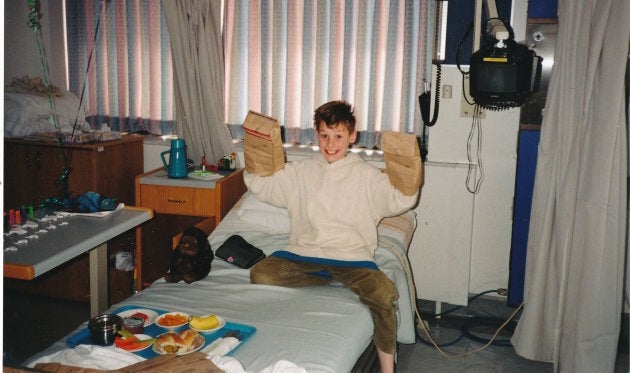
Type 1 diabetes is a disease in which the pancreas cannot produce insulin, the hormone needed to control the level of glucose in the blood. Without insulin, glucose builds up in the body instead of being used for energy. The American Diabetes Association recommends exercise, even high-level competitive sport, for people with Type 1 diabetes. But diabetics do face serious risks from intense exercise that other people might not.
When athletes with diabetes push themselves, their blood sugar might drop or jump. This affects their performance but also raises risks for more dangerous possibilities: cramps, confusion, seizures, even death. It's not well-understood why people with diabetes respond the way they do to exercise — it differs from person to person, and day to day. So it's difficult to predict what will happen to an athlete under conditions of extreme exertion.
Bodies under stress
Team Novo Nordisk is a professional cycling team made up entirely of athletes with diabetes. Its founder, Phil Southerland, was diagnosed with Type 1 diabetes as a baby and told as a kid that he should stay away from exercise; he later became a professional cyclist.
Southerland and Team Novo Nordisk's doctor, Mark Greve, track their cyclists' performances carefully. They say there's no formula for what will happen to each athlete when their body is under stress. Some cyclists' blood sugars tend to plummet; others' go sky-high.
Athletes can usually fix the immediate problem by adjusting their insulin or their food intake. But the long-term effects are more complicated.
A body that's been through a sustained effort — such as a multi-stage bike race or an ultra-marathon — undergoes prolonged changes in metabolism long after a race is done. The consequences can be dramatic. Southerland has his own example: as a teen, he experienced one of his first seizures standing in the breakfast line at a diabetes camp, a few days after a tough mountain bike race.

MacNairn, too, was an athletic teen. More than once, he's awakened in an emergency room or with paramedics standing over him. He says he has nearly died more times than he can count or remember, especially as a teen when he was figuring out glucose control as his body was changing.
He learned to watch his body carefully for cues indicating the onset of high or low blood sugar. He used a continuous glucose monitor and insulin pump for years, injecting himself with insulin as needed and eating every few hours to keep his blood sugar up.
As he ran more, he found that low-intensity, sustained exercise controlled his blood sugar better than anything. "This, for me, is one of the best arguments that diabetics should be supported to be professional athletes," he said.
Three months into training for his first ultra, his transformation was "remarkable," Mather says. MacNairn became leaner, stronger; he could run faster for longer.
The biggest change, MacNairn says, was internal: his ability to endure pain improved dramatically. He has shown in his research that this mindset is common among people who regularly participate in ultra-marathons. When he spoke with ultra-runners for his thesis, often running alongside them, one of the major themes he identified was something he called "PIS" — short for pain, injury, and suffering.
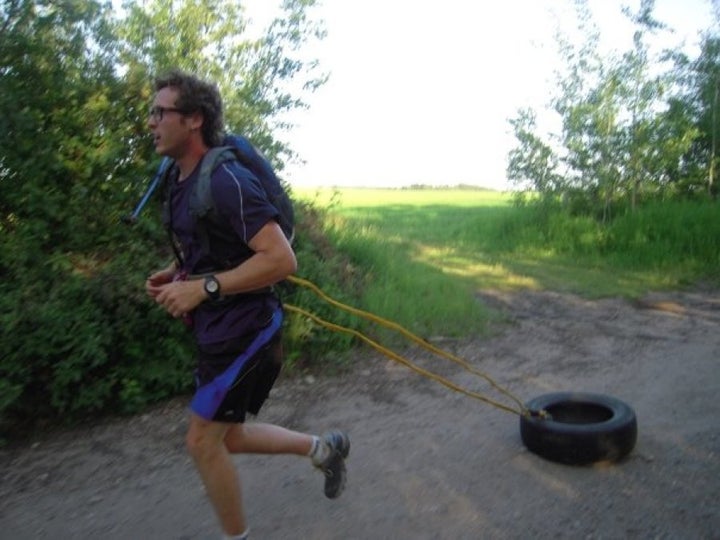
MacNairn describes his first ultra-marathon as a lesson in how not to run an ultra-marathon. With a plan to consume between 200 to 300 calories an hour, he carried plenty of sports gels, eating one every 20 minutes. Seventy kilometres in, his stomach started to turn.
By early evening, he was forced to make repeated stops for stomach cramps and diarrhea. Later, he realized his mistake: he had overdosed on vitamin C by relying solely on sports gels, taking in 7,000 per cent of the recommended daily intake.
"By the time I got to the last 10 miles, it was a sad kind of walking," he remembers. His quads cramped; his feet ached from the time on trail and rocks. But, 23 hours and 10 minutes after he started, MacNairn crossed the finish line — in second-last position.
And he was hooked. Again, he's learned many ultra-runners experience a similar compulsion post-race: whether they finish the first time or not, runners often begin looking at doing a second competition within a week of the first.
Once their pain subsides, ultra-athletes question what more they could have done. If they didn't finish, they want to try again; if they did finish, they want to do it faster. For MacNairn, he was soon looking at more races and approached Mather about studying ultra-runners as a masters project.
Today, MacNairn is nearing the end of his PhD studies, having interviewed more than 1,000 ultra-marathoners. At the same time, he's become a professional ultra-marathoner, sponsored by The North Face, Smartwool, Julbo Eyewear, Clif bar, Xact Nutrition, Tecnica and Blizzard.
In the 10 years since his first race, MacNairn has completed nearly 75 ultra-marathons and trail races. He typically finishes at or near the front of the pack.
An ultra-marathon is defined as any race longer than the standard marathon distance of 42.4 kilometres. MacNairn prefers ultras that are highly technical and require summiting mountains and crossing glaciers. In the past year, he's started adding more disciplines into his races, choosing events that require rock or ice climbing.

When he's training for an ultra, he runs every day, sometimes twice daily. He prefers trail running in the mountains, often alone. In 2016, he fell 30 metres down a mountain on a solo training run and had to crawl out, an accident that ended his racing season.
He performs a fingerprick test five to seven times a day to check his glucose. He carries his glucose monitor in a backpack when he's training in the mountains. Last winter, he switched to multiple daily insulin injections after years of relying on a pump and continuous glucose monitor. He found the monitor would shut down in the cold, making multi-day backcountry trips in the Canadian winter more dangerous than they should be.
Jacob Puzey, a Calgary-based runner and coach who often trains with MacNairn, said they've experienced scary problems with his friend's diabetes while running.
"It's not like I had to resuscitate him or anything, but there have been times when we were 10, 15 kilometres from the nearest vehicle and we had to figure out how to get back," said Puzey.
"I find it quite remarkable and inspiring that he does what he does, given those limitations. It's really a mixed bag — some days you go out and he can go 100 kilometres and another day 10 kilometres might be too much."
'You basically empty the tank'
Adrian Harvey, an endocrine surgeon who has been running multiple ultra-marathons yearly for almost a decade, said it seems that it would be "nearly impossible" to finish an ultra-marathon with Type 1 diabetes.
"You basically empty the tank on an ultra-marathon. There's nothing left, and you go down to burning fat."
A runner might be burning between 600 and 900 calories every hour for up to 24 hours as they run, said Harvey. In that time, they can only absorb around 200 to 300 calories — resulting in a caloric deficiency of about 500 calories an hour. "You need to make that up after. It would be more challenging, if you had diabetes, to eat heavily for the next week or two to make up that deficit."
But no challenge seems too daunting for MacNairn. He's been accepted to medical school, with plans to start this summer. He writes articles for academic journals and running magazines. Two years ago, he decided to learn how to ski. Within 50 days of his first day out, he successfully skied three goals: a big traverse, a super-steep line and a big mountain.
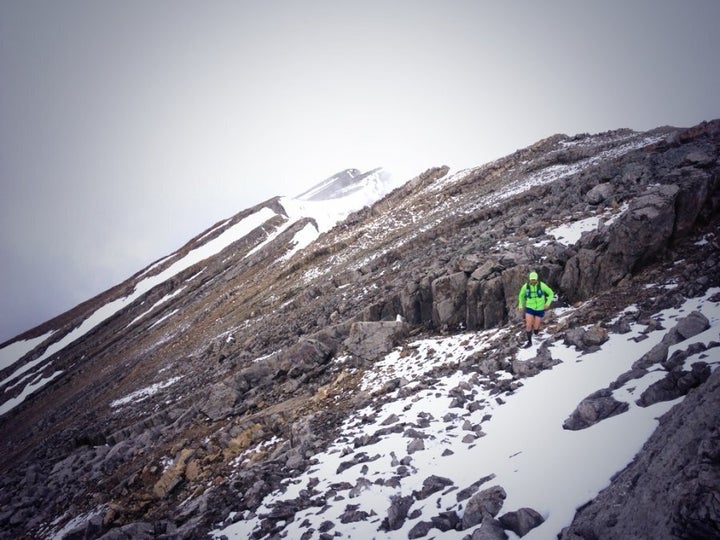
In 2018, he turned his focus to improving his climbing skills and qualified for the Canadian national ice climbing team. He competed at the International Climbing and Mountainteering Federation's ice climbing world championships in Denver in February, placing 16th and 33rd in his events.
MacNairn says his experience with diabetes has taught him how to manage risk. Every day, whether at home or on a mountain trail, he makes decisions about what he needs to do to stay alive.
"It's changed my perspective of the world and my relationship with observing myself. You develop a monstrous work ethic and diligence, because if I don't work hard, I don't live. That was drilled into me by my parents and health-care workers since I was a child."
MacNairn won't be returning to the Els 2900 race in Andorra. He does not like to do the same race twice. Instead, he's set his sights on qualifying for the 2019 Long Distance Mountain Running World Championships in Argentina.
"My life is short enough. So I'd rather go out and do something I've never [done] before in a place I've never seen before. To me, it's always about exploration."
CORRECTION: A previous version of this story stated that Ian MacNairn was told he needed insulin during his low blood sugar episode. In fact, his former girlfriend asked him about his insulin and told him he needed sugar.
